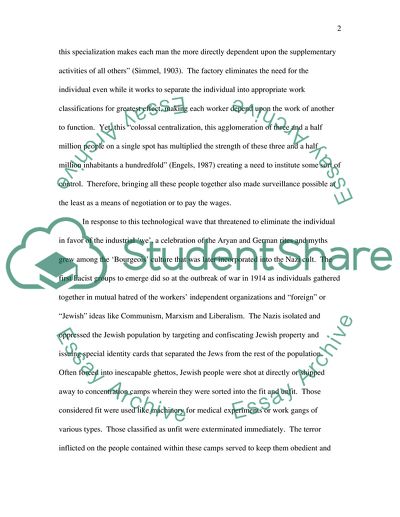Cite this document
(“Compare and contrast the relationships which evolved between Essay”, n.d.)
Compare and contrast the relationships which evolved between Essay. Retrieved from https://studentshare.org/miscellaneous/1535795-compare-and-contrast-the-relationships-which-evolved-between-technology-subjectivity-and-space-of-concentration-camsp-factory-manhatten-project-cinema-and-the
Compare and contrast the relationships which evolved between Essay. Retrieved from https://studentshare.org/miscellaneous/1535795-compare-and-contrast-the-relationships-which-evolved-between-technology-subjectivity-and-space-of-concentration-camsp-factory-manhatten-project-cinema-and-the
(Compare and Contrast the Relationships Which Evolved Between Essay)
Compare and Contrast the Relationships Which Evolved Between Essay. https://studentshare.org/miscellaneous/1535795-compare-and-contrast-the-relationships-which-evolved-between-technology-subjectivity-and-space-of-concentration-camsp-factory-manhatten-project-cinema-and-the.
Compare and Contrast the Relationships Which Evolved Between Essay. https://studentshare.org/miscellaneous/1535795-compare-and-contrast-the-relationships-which-evolved-between-technology-subjectivity-and-space-of-concentration-camsp-factory-manhatten-project-cinema-and-the.
“Compare and Contrast the Relationships Which Evolved Between Essay”, n.d. https://studentshare.org/miscellaneous/1535795-compare-and-contrast-the-relationships-which-evolved-between-technology-subjectivity-and-space-of-concentration-camsp-factory-manhatten-project-cinema-and-the.


